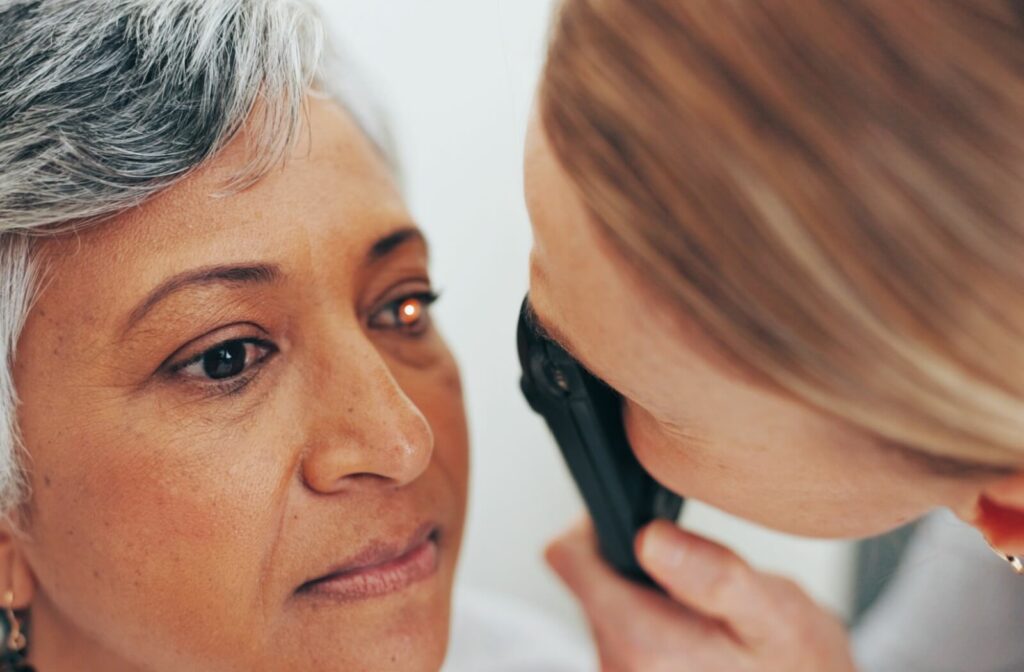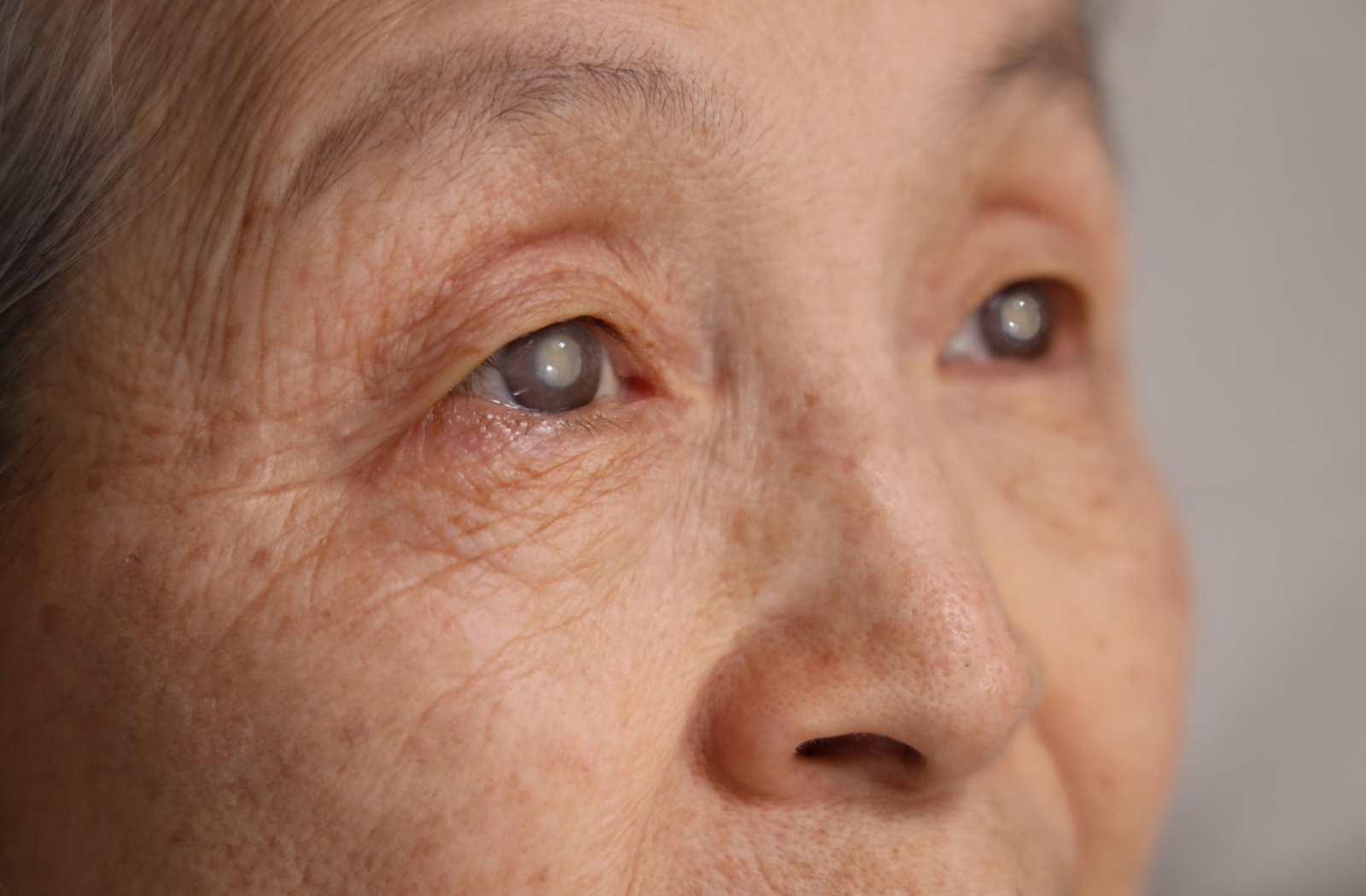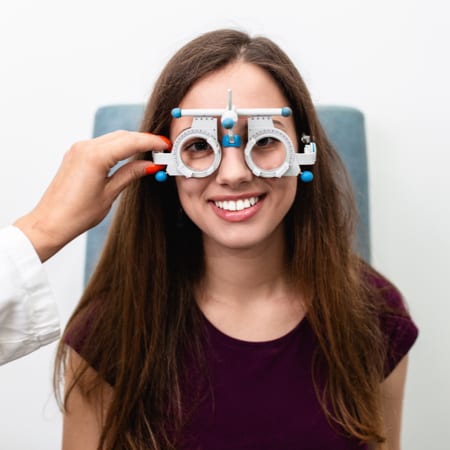Cataracts are one of the most common eye conditions affecting Canadians, especially as we age. But while cataracts can be frustrating, they are also highly treatable—especially when diagnosed early.
The first sign of cataracts is typically cloudy or blurry vision. You may notice that things look slightly foggy, as if you’re constantly looking through a misty window or a smudged lens. This early symptom can be easy to ignore at first, but it’s a sign you should schedule an eye exam and get a clear picture of your eye health.
What Are Cataracts?
Cataracts form when the eye’s natural lens—located just behind your iris—begins to cloud over. The lens plays an important role in focusing light and producing sharp, clear images. As we age, proteins in the lens begin to break down and clump together, creating cloudy patches in your vision that interfere with light passing through the eye.
Cataracts is most often age-related, but can develop for other reasons as well. Over time, they can cause significant vision loss if left untreated.
What Causes Cataracts?
While the natural aging process is the most common cause, several other factors can increase your risk of developing cataracts:
- UV exposure: Long-term sun exposure without proper eye protection can damage the eye’s lens.
- Smoking and air pollution: These can accelerate the breakdown of proteins in the eye.
- Family history: Genetics can play a role in early-onset cataracts.
- Previous eye injury or surgery: Trauma to the eye can trigger cataract formation.
- Chronic health conditions: Diabetes and other systemic conditions can increase cataract risk.
- Certain medications: Long-term use of corticosteroids and other drugs may lead to cataracts.
Cataracts are progressive, meaning symptoms typically worsen over time. This makes early detection key to maintaining quality vision.
Cataracts: The Early Signs & Symptoms
Cloudy vision is often the first and most noticeable symptom. It’s often experienced as a smudge or film over your eyes, particularly in one area of your visual field. At first, this effect may be subtle—easy to dismiss as fatigue or as the result of an old glasses prescription.
Other early signs of cataracts may include:
- Faded or dull colours: Colours may lose their brightness and contrast.
- Difficulty with night vision: You may struggle to see clearly in low-light environments or while driving at night.
- Glare and light sensitivity: Bright lights may seem too intense, and halos may appear around light sources.
- Double vision in one eye: Objects may appear to overlap or blur.
- Frequent prescription changes: Your eyeglasses or contact lens prescription may seem to need updating more often than usual.
If you’re experiencing any of these symptoms, an optometrist can perform a comprehensive eye exam to confirm whether cataracts—or another condition—are the cause.
Can Cataracts Cause Blindness?
Yes, cataracts can eventually cause vision loss, and even blindness if left untreated. As the clouding of the lens worsens, less light is able to reach the retina, making it harder to see clearly.
In serious cases, cataracts can severely impact your ability to perform everyday activities, including reading, driving, and recognizing faces. This is why timely diagnosis and treatment are so important. Fortunately, vision loss from cataracts is typically reversible with surgery.

How Are Cataracts Treated?
In the early stages, cataracts may not require immediate surgery. Your optometrist may recommend strategies to help manage the symptoms:
- Using brighter lights at home or work
- Wearing anti-glare lenses for outdoor use
- Updating your glasses prescription to sharpen vision
- Using magnifiers for reading and detailed tasks
These measures can help you continue your daily activities comfortably, but they don’t stop cataracts from progressing. Eventually, if your vision begins to interfere with daily life, cataract surgery may be the best option.
What to Expect From Cataract Surgery
Cataract surgery is one of the most commonly performed—and most successful—surgical procedures. It involves removing the clouded natural lens and replacing it with a clear artificial intraocular lens (IOL).
Here’s what you can expect:
- Pre-surgery assessment: Your optometrist will assess your eye health and refer you to a cataract surgeon if necessary.
- Day of surgery: You’ll receive local anesthesia and remain awake but comfortable. Your surgeon will make a small incision in the eye, after which they’ll remove the cataract using ultrasound technology. Then they’ll insert the IOL.
- Recovery: Most people return home the same day. Recovery is typically quick, with many noticing improved vision within a few days. Some light sensitivity or gritty sensation is normal, and post-operative instructions will help guide healing.
Be sure to attend all follow-up appointments and reach out to your eye care provider if you experience discomfort or vision changes during recovery.
Why Early Detection Matters
The earlier cataracts are diagnosed, the more options you have for managing them. Delaying diagnosis and treatment can lead to worsening symptoms and decreased quality of life. But with early detection and a personalized treatment plan, you can maintain clear, comfortable vision for years to come.
If you’ve noticed any changes in your vision—especially cloudiness, glare, or difficulty seeing at night—it’s time to book an eye exam. A comprehensive checkup is the first step in protecting your vision and your independence.
Protect Your Vision With Woodstock Vision Care
Your vision plays a central role in how you live, work, and connect with the world around you. Cataracts may be common, but with early detection and the right care, they don’t have to limit your lifestyle.
At Woodstock Vision Care, we’re here to help you spot the signs of cataracts early and support you every step of the way. Our team offers comprehensive eye exams and personalized care plans to ensure you see clearly and confidently as you age.
Book your next eye exam with us today—and take the first step in preserving your vision for the future.
















